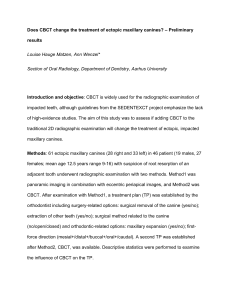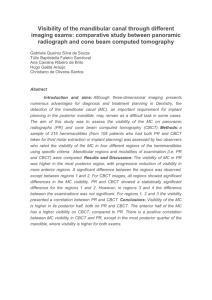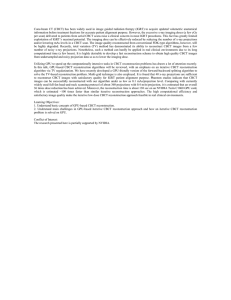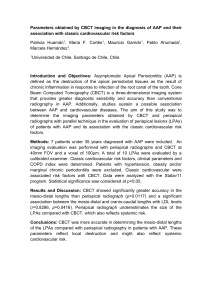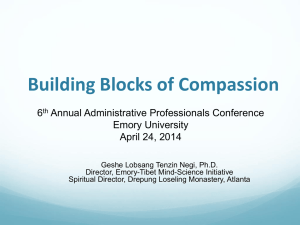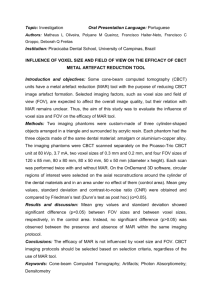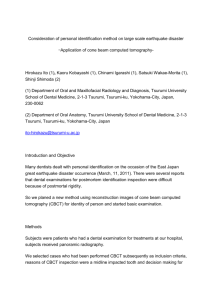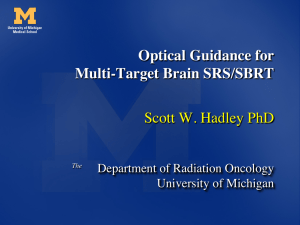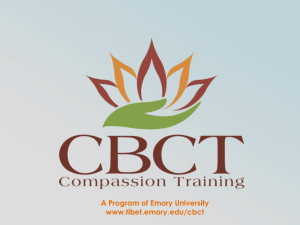Cognitively-Based Compassion Training - Emory
advertisement
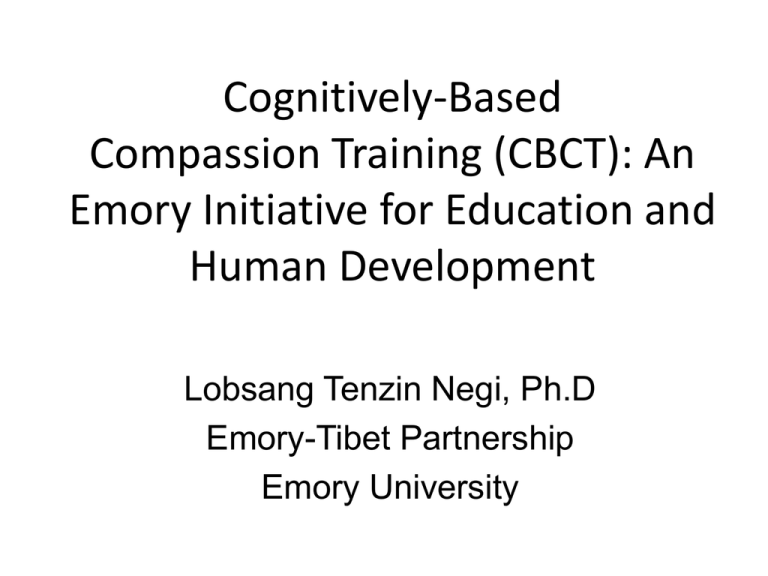
Cognitively-Based Compassion Training (CBCT): An Emory Initiative for Education and Human Development Lobsang Tenzin Negi, Ph.D Emory-Tibet Partnership Emory University A Case for Educating the Heart His Holiness the XIVth Dalai Lama Commencement Speech Emory University May 11, 1998 “I believe that education is like an instrument. Whether that instrument…is used properly or constructively…depends on the user. We have education on the one hand; on the other hand, we have a good person. A good person means someone with a good heart, a sense of caring for the welfare of others…Education and the warm heart, a compassionate heart, if you combine these two, then your education, your knowledge, will be constructive.” Bringing Compassion into Education: The Need for Scientific Evidence “I have always felt that if science could show such practices (compassion, loving-kindness and attention) to be both possible and beneficial, then perhaps they could even be promoted through mainstream education.” His Holiness the XIVth Dalai Lama Beyond Religion: Ethics for a Whole World A Method for Training Compassion: Emory’s CBCT Protocol • Cognitively-Based Compassion Training (CBCT) is drawn from the lojong tradition of Indo-Tibetan Buddhism, but rendered into secular form. • There are six key components of CBCT: – – – – – – Developing Attentional Stability Cultivating Insight into Thoughts and Emotions Self-compassion Developing Impartiality Developing Affectionate Love and Empathy Strengthening Compassion FINDINGS FROM CBCT RESEARCH WITH UNDERGRADUATES AT EMORY UNIVERSITY TSST prior to meditation training 0.5 0 -0.5 -1.0 -1.5 0 15 60 75 90 0.5 0 -0.5 -1.0 -1.5 10 8 TSST 30 45 60 75 Time (min) Pace et al. Psychoneuroendocrinol 2009;34:87-98; Pace et al. Psychoneuroendocrinol 2010; 35: 310-15 90 30 45 60 75 90 Time (min) 18 16 14 12 10 8 0 15 15 TSST 12 0 0 Time (min) 18 16 14 0 TSST after meditation training plasma cortisol, µg/ml Cortisol plasma cortisol, µg/ml TSST 30 45 log plasma IL-6, pg/ml IL-6 log plasma IL-6, pg/ml Effects of CBCT on neuroendocrine and innate immune responses to stress 0 15 TSST 30 45 60 75 90 Time (min) low practice high practice Findings from CBCT Research on Empathic Accuracy IFG Brain Activation and Reading the Mind in the Eyes CBCT Group Control Group Mascaro et al. SCAN 2012: Epub Depression score Amygdala response Different effects of mindful-attention training vs. compassion training Mindful-Attention Training Compassion Training * Before After Desbordes, Negi, et al., Frontiers in Human Neuroscience, 2012 Before After CBCT for At-risk Adolescents in Foster Care “We have no shortage of programs for kids in care, but they are all focused on changing external circumstances. We need a program that brings about inner change, and I feel that Emory’s compassion program is exactly what our children need.” B.J. Walker Commissioner, GA Division of Human Services, 2009 • Helped youth transform relationships with caregivers, teachers and peers • Encouraged concrete changes in their behavior Lower inflammation and greater hope in foster care adolescents who practiced CBCT more more hope 60000 55000 50000 45000 40000 35000 30000 25000 20000 15000 10000 5000 0 11 10 9 8 7 6 5 4 3 2 1 0 -1 change in Children’s Hope Scale Score from before to after training saliva C-reactive protein controlling for baseline higher inflammation low CBCT practice* lower inflammation high CBCT practice* *below or above median practice sessions Pace, Negi, Dodson-Lavelle, Ozawa-de Silva, Reddy, Cole, Danese, Craighead & Raison (in press). Psychoneuroendocrinology, July 2, 2012 less hope low CBCT practice* high CBCT practice* Reddy, Negi, Dodson-Lavelle, Ozawa-de Silva, Pace, Cole, Raison, Craighead (in press) Journal Child Family Studies, February 21, 2012 CBCT for Elementary School Children “At first, I was a bit worried about whether or not we could teach these concepts to very young children, but their creativity and ability to grasp these teachings completely blew my mind.” Brooke Dodson-Lavelle, CBCT Instructor Brendan and Brooke with children at Paideia Insights from the Classroom “I have a lot of forest fires in my life.” -boy, age 5 “If you really think about it, you can relate to everybody somehow.” -girl, age 8 -girl, age 8 “Where does it stop?” “It never stops!” -girl, age 6

